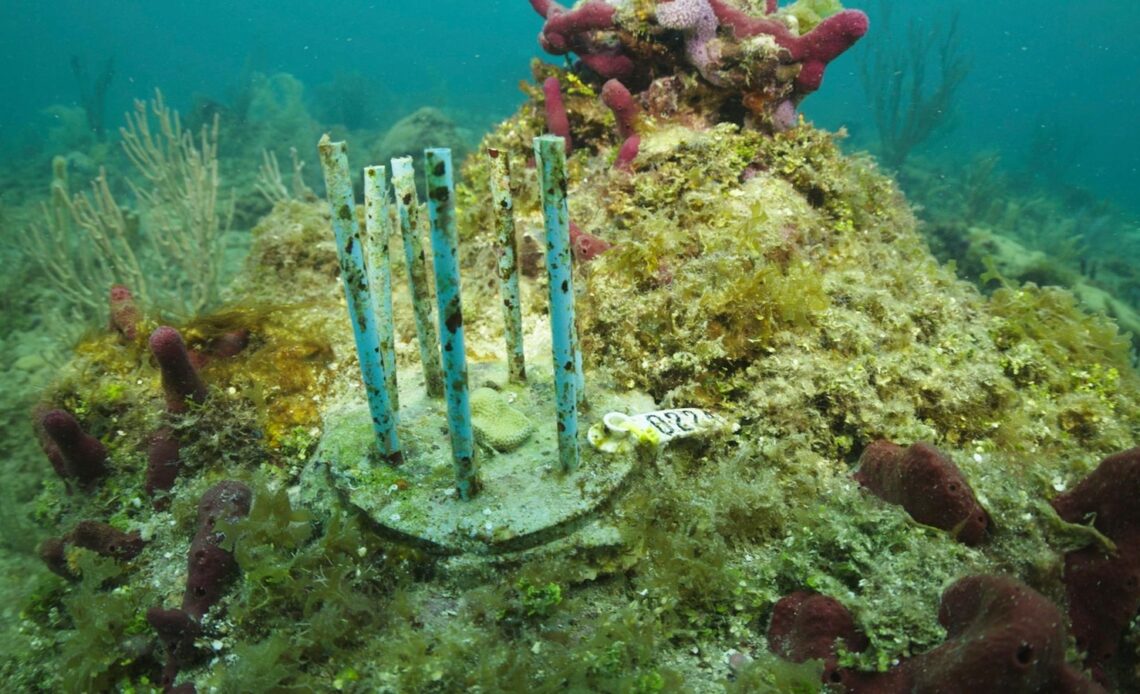FORT LAUDERDALE, Fla. — South Florida researchers trying to prevent predatory fish from devouring laboratory-grown coral are grasping at biodegradable straws in an effort to restore what some call the rainforest of the sea.
Scientists around the world have been working for years to address the decline of coral reef populations. Just last summer, reef rescue groups in South Florida and the Florida Keys were trying to save coral from rising ocean temperatures. Besides working to keep existing coral alive, researchers have also been growing new coral in labs and then placing them in the ocean.
But protecting the underwater ecosystem that maintains upwards of 25% of all marine species is not easy. Even more challenging is making sure that coral grown in a laboratory and placed into the ocean doesn’t become expensive fish food.
Marine researcher Kyle Pisano said one problem is that predators like parrot fish attempt to bite and destroy the newly transplanted coral in areas like South Florida, leaving them with less than a 40% survival rate. With projects calling for thousands of coral to be planted over the next year and tens of thousands of coral to be planted over the next decade, the losses add up when coral pieces can cost more than $100 each.
Pisano and his partner, Kirk Dotson, have developed the Coral Fort, claiming the small biodegradable cage that’s made in part with drinking straws boosts the survival rate of transplanted coral to over 90%.
“Parrot fish on the reef really, really enjoy biting a newly transplanted coral,” Pisano said. “They treat it kind of like popcorn.”
Fortunately the fish eventually lose interest in the coral as it matures, but scientists need to protect the coral in the meantime. Stainless steel and PVC pipe barriers have been set up around transplanted coral in the past, but those barriers needed to be cleaned of algae growth and eventually removed.
Pisano had the idea of creating a protective barrier that would eventually dissolve, eliminating the need to maintain or remove it. He began conducting offshore experiments with biodegradable coral cages as part of a master’s degree program at Nova Southeastern University. He used a substance called polyhydroxyalkanoate, a biopolymer derived from the fermentation of canola oil. PHA biodegrades in ocean, leaving only water and carbon dioxide. His findings were published last year.
The coral cage consists of a limestone disc surrounded by eight vertical phade brand drinking straws,…
Click Here to Read the Full Original Article at ABC News: Business…

